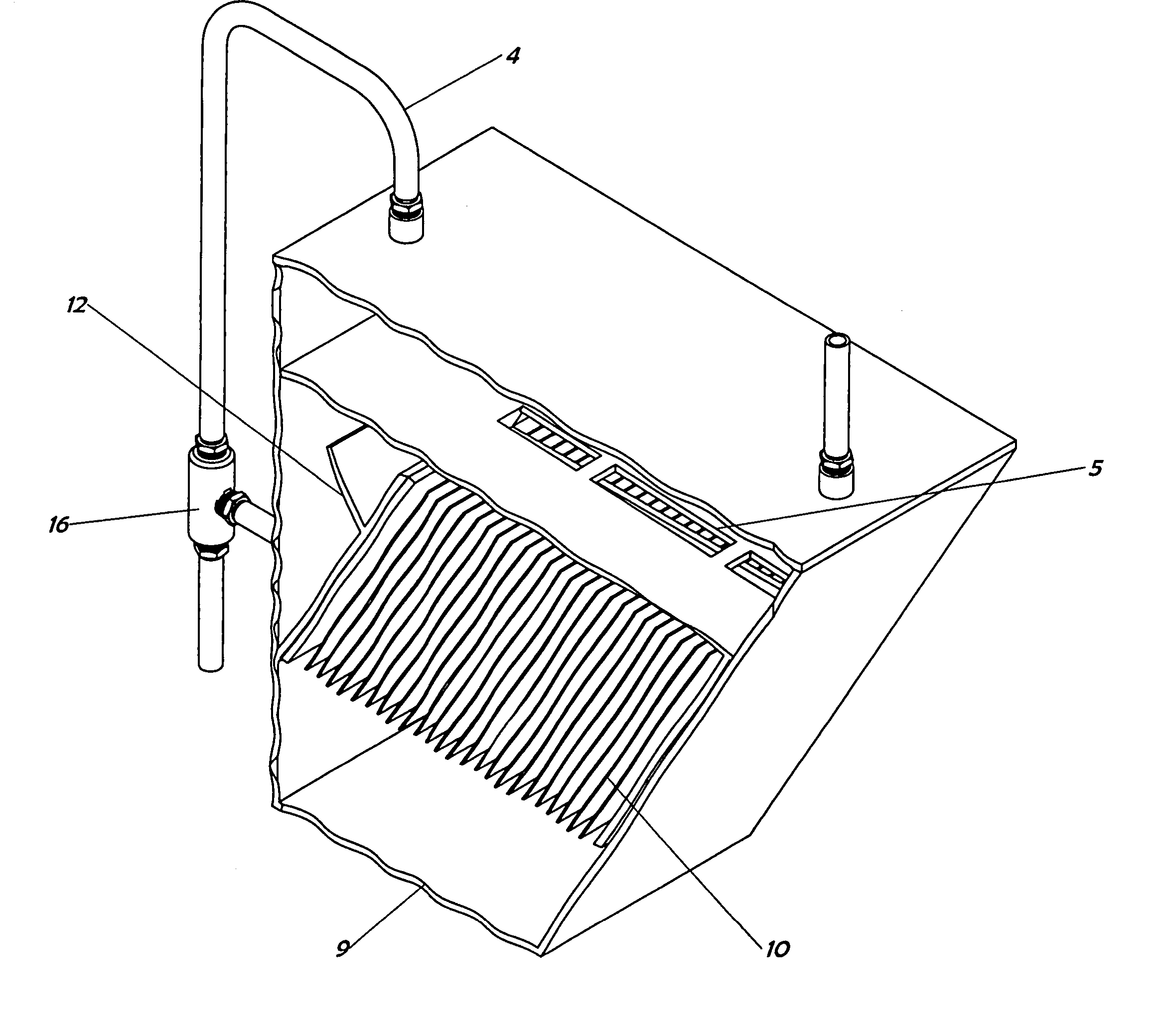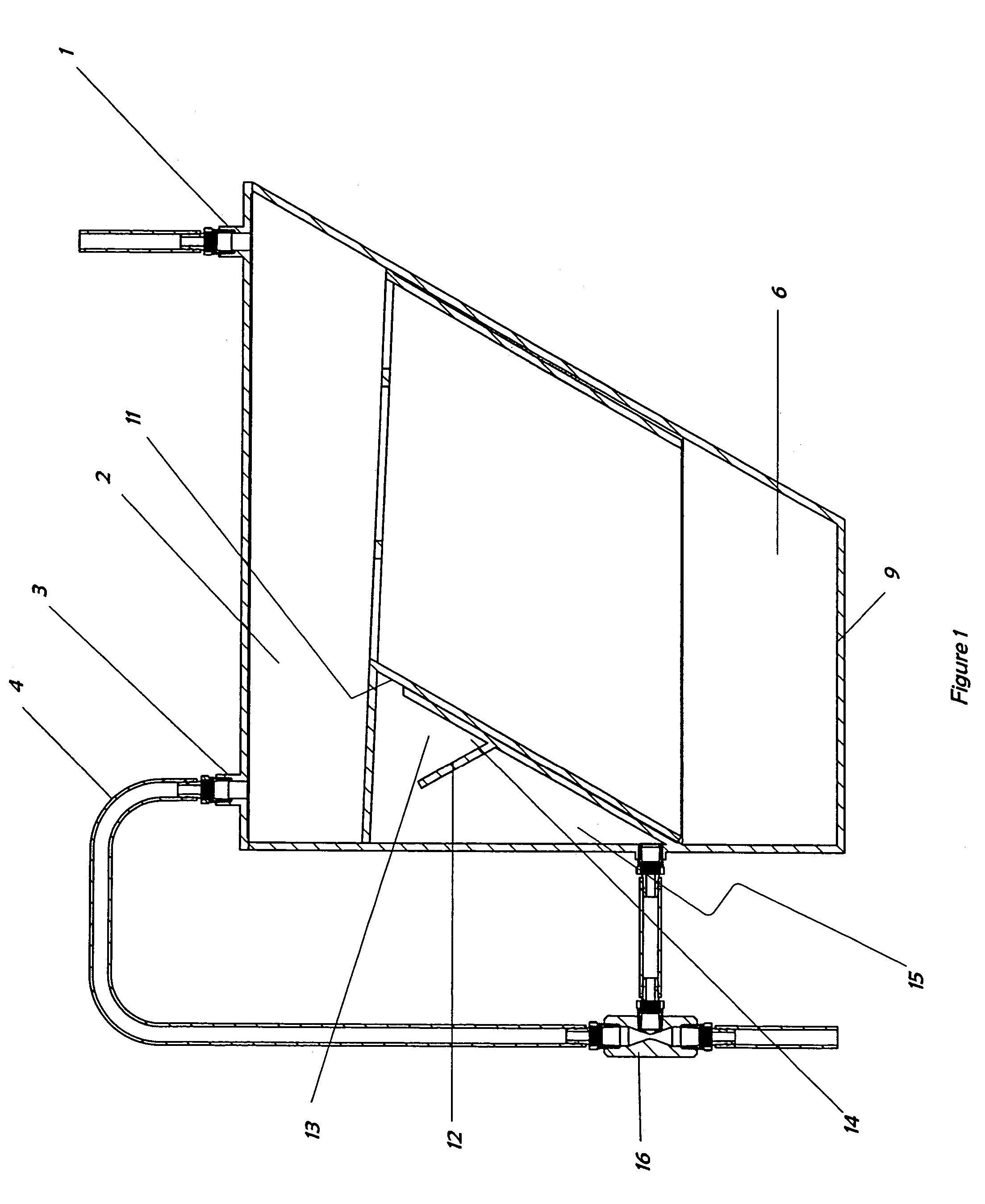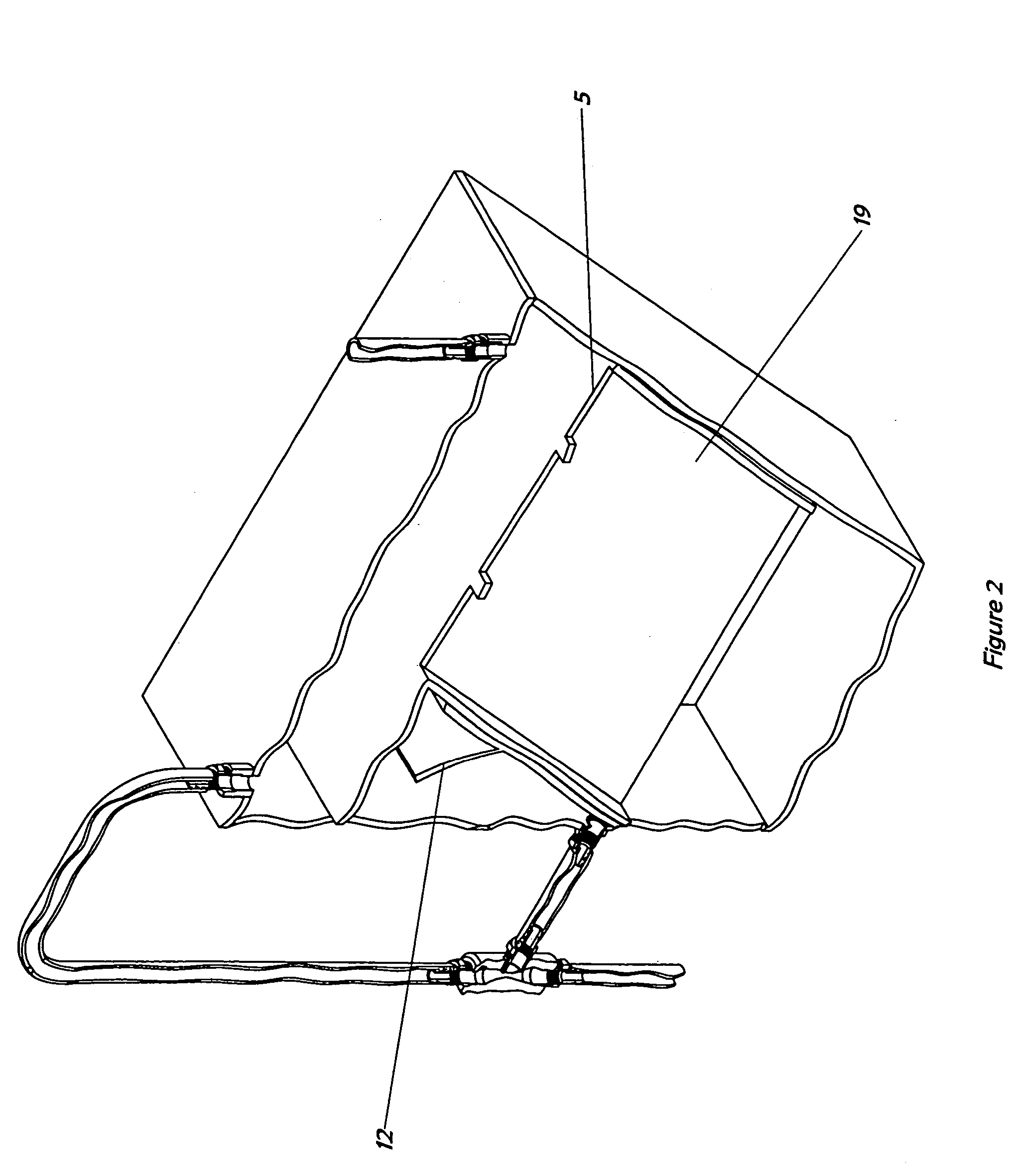Dental amalgam separator
a technology of amalgam separator and dental office, which is applied in the direction of gravity filter, sedimentation settling tank, cation exchanger, etc., can solve the problems of limited surface area for mercury sedimentation, large amount of mercury waste generated in dental offices, and limited disposal of mercury-laden wastes, so as to improve the ability of the separator to trap and increase the efficiency of the device
- Summary
- Abstract
- Description
- Claims
- Application Information
AI Technical Summary
Benefits of technology
Problems solved by technology
Method used
Image
Examples
example 1
Analytical Evaluation of the Recovery of Mercury by the Separator
[0108]A series of experiments were performed with a model separator unit in order to evaluate the efficiency of the device for the removal of mercury from a simulated dental effluent stream containing mercury amalgam. The separator unit consisted of an inlet, surge tank with central connection channel, and plate chamber. In some experiments, the effluent after having passed through the separator was also passed through a resin.
[0109]The analytical determination of mercury in the experiments was generally performed following the standard procedure as set out in ISO 11143. The ISO 11143 procedure for the evaluation of mercury levels is a gravimetric analysis using an analytical balance. An alternative to gravimetric analysis for the measurement of mercury levels is atomic adsorption analysis (AA spectroscopy). Experiments were done using AA analyses.
[0110]For each of the experiments the separator unit was filled with cle...
example 2
Evaluation of the Liquid Flow Patterns In the Separator
[0116]A working model of the invention was constructed out of plexiglass material with an air / water separator surge tank, plate chamber, collection chamber, with an optional chemical and ion-exchange chamber in order to evaluate the flow characteristics of the separator. The determination of the flow characteristics of the separator allowed design of a separator to prevent the clogging or short-circuiting seen in other dental separators. The movement of a water-soluble dye (methylene blue 0.05%) was used in order to observe the motion of the liquid through the separator at a rate of 5 liters per minute for 30 minutes. The dye exhibited Brownian-like movement through the precipitation chamber containing the inclined plates and sedimentation tank, showing that the design of the device provides the appropriately still conditions (turbulence-free) needed to induce sedimentation relative to the air / water separation chamber. No channe...
example 3
Testing of the Separator at a Dental Facility
[0117]A prototype separator consisting of 4 inclined plates at a 45 degree angle was tested at a dental centre, using a dental vacuum pump air stream comparable to those found in most dental offices. The dental vacuum pump serviced 6 dental chairs and was run continuously while approximately 5 amalgam filings were removed. The separator functioned, with no loss of fluids, materials or release of noxious odors during a 4 hour test session. The test conditions included periods of variable flow to the separator, as would be present during the routine use of the separator in a clinical setting.
PUM
| Property | Measurement | Unit |
|---|---|---|
| flow rate | aaaaa | aaaaa |
| concentration | aaaaa | aaaaa |
| concentration | aaaaa | aaaaa |
Abstract
Description
Claims
Application Information
 Login to View More
Login to View More - R&D
- Intellectual Property
- Life Sciences
- Materials
- Tech Scout
- Unparalleled Data Quality
- Higher Quality Content
- 60% Fewer Hallucinations
Browse by: Latest US Patents, China's latest patents, Technical Efficacy Thesaurus, Application Domain, Technology Topic, Popular Technical Reports.
© 2025 PatSnap. All rights reserved.Legal|Privacy policy|Modern Slavery Act Transparency Statement|Sitemap|About US| Contact US: help@patsnap.com



